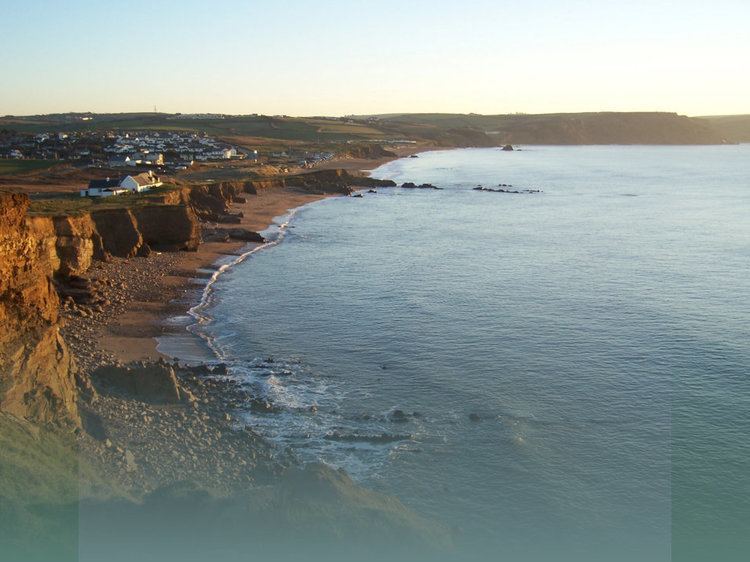 | ||
Similar Sandymouth Beach, Crooklets, Bude Canal, Poundstock, Summerleaze Beach | ||
Widemouth bay 17th april 2016
Widemouth Bay (Cornish: Porth an Men) is a bay and beach on the Atlantic coast of Cornwall, England, UK. It is about 3 miles (5 km) south of Bude. This stretch of coast is steeped in the smuggling history of times before, and not far south of Widemouth Bay can be found many little inlets and coves.
Contents
- Widemouth bay 17th april 2016
- Widemouth bay holiday village
- ActivitiesEdit
- Geography of Widemouth BayEdit
- Submarine communications cablesEdit
- Repeater stationEdit
- References
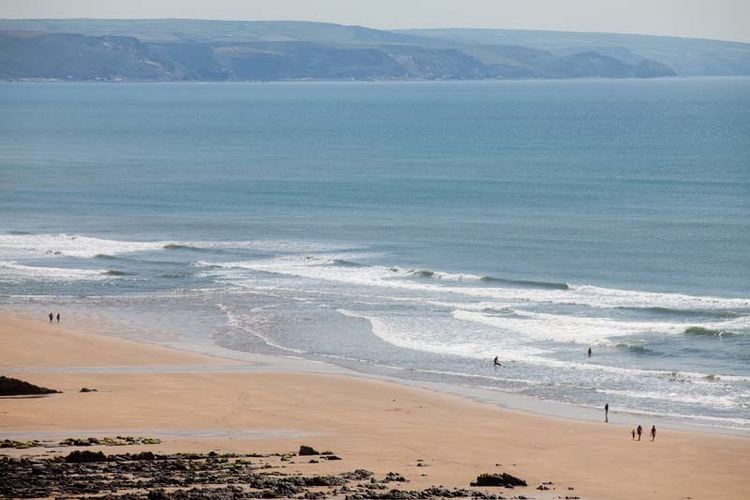
Widemouth bay holiday village
ActivitiesEdit
The beach is popular for surfing and swimming and is patrolled in the summer by RNLI lifeguards. Several surfing schools operate on the beach because it has relatively gentle, easy to ride waves but on the other hand there can be big waves. There are several cafes on and around the beach as well as a pub and shops on the hill above the bay.
Geography of Widemouth BayEdit
Widemouth Bay is visually very similar to Southerndown and Ogmore-by-Sea across the Bristol Channel in Wales; it has the same (gently sloping) hill-top location; wide, sandy beach; pounding Atlantic surf; and significantly the same carboniferous sandstone cliffs. Another significant connection is that sloops from Wales would use Widemouth as a port (in the most basic sense), unloading coal and limestone; sloops would take back to Wales Cornish wares such as granite, slate, tin, copper and even Cornish pasties.
Submarine communications cablesEdit
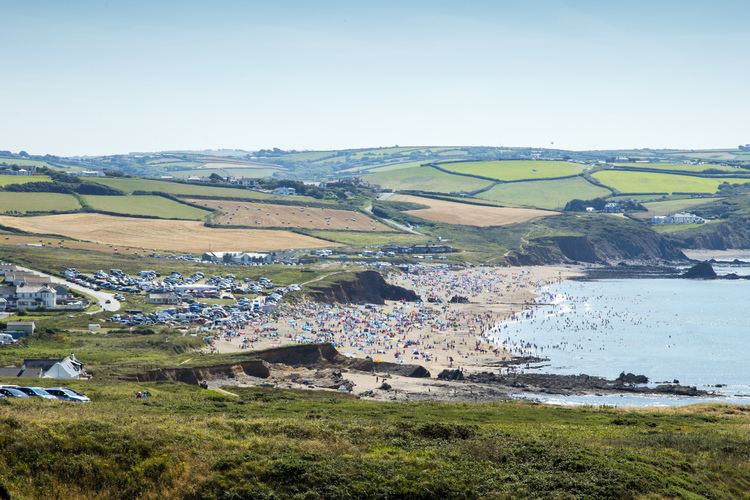
The gentle beaches in the bay are also the landing points for many submarine cables that link the UK with other parts of the world. The proximity to GCHQ Bude installation allows data sent on these cables to be intercepted by GCHQ. These cables include:
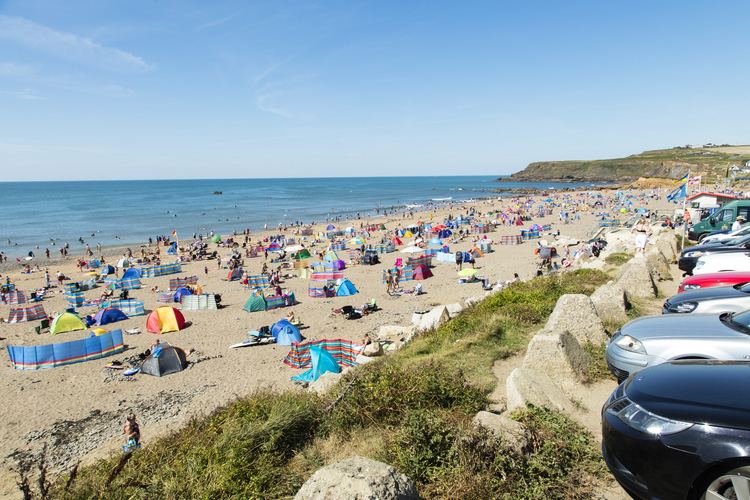
Repeater stationEdit
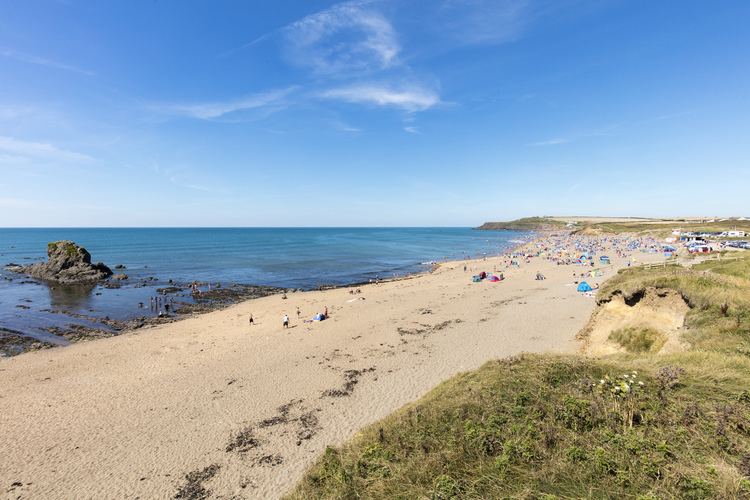
The repeater station is a cable landing station. Construction was begun in 1962 and finished during 1963. The building was specifically constructed to withstand nuclear attack, having numerous specialised features including an air filtration system, five-ton blast doors, and backup power supply systems allowing it to operate as an autonomous building. The majority of the building is constructed below ground, as is common with many blast-resistant bunkers.
